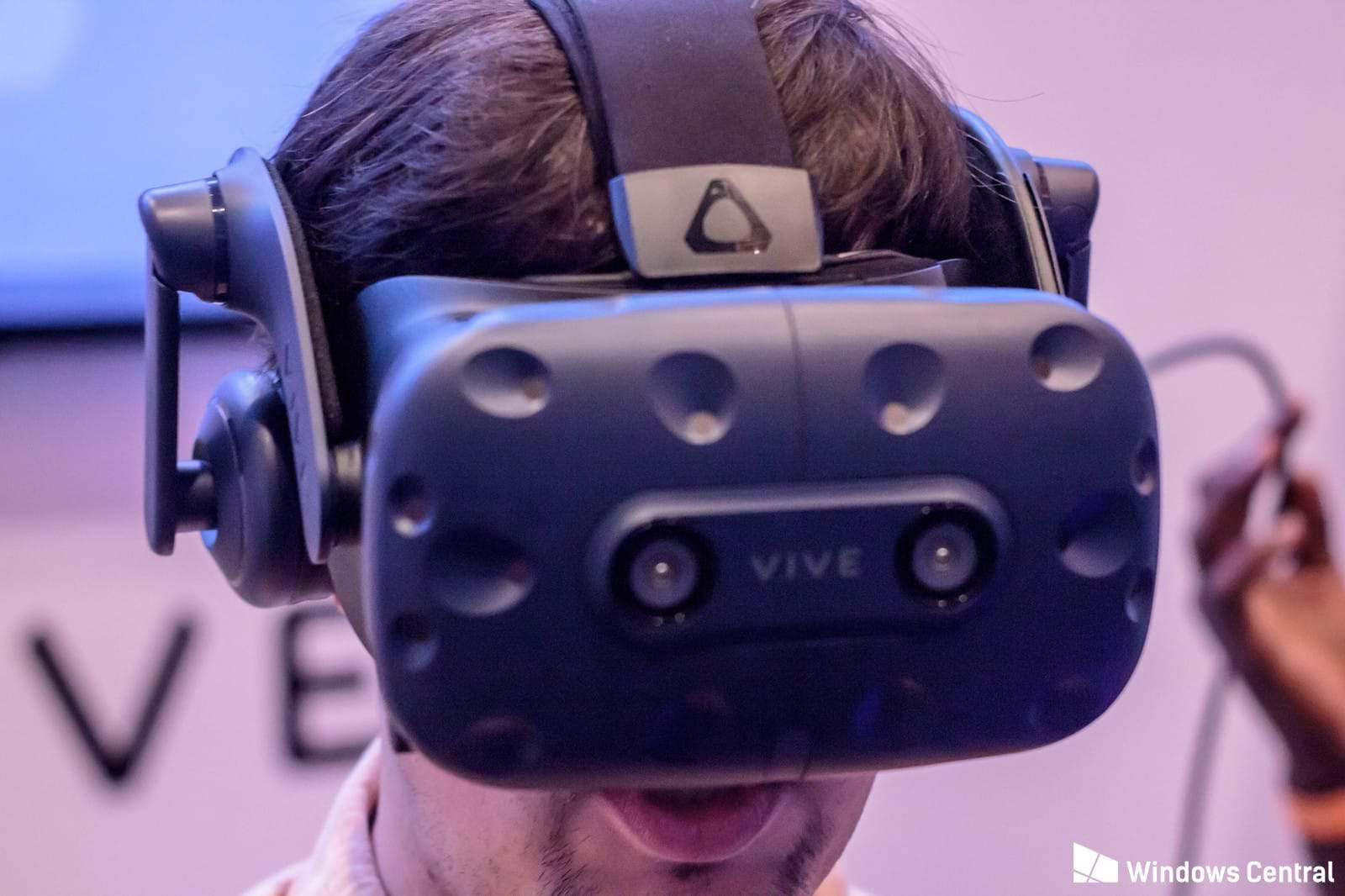There’s a couple of major issues holding back mass adoption of Virtual Reality – lack of content and headset design make the top of our list. Content is finally taking off with new projects and recent distribution deals at film festivals. Smaller VR headsets? Not so fast. But there’s a glimmer of light in the HMD area due to due to recent breakthroughs in screen technology.
New VR screens will be shown off at the 2018 SID Display Week event in Los Angeles. They could spur the development of radically smaller VR headsets in the next two years.
Seriously, 834 grams (HP’s Mixed Reality HMD) is just too much to strap to your face. That’s 1.8 pounds for those still ignoring the metric system. Oculus Go is better, managing to weigh in at only 468 grams. But still a lot.
Increasing pixels for smaller VR headsets
The problem with VR headsets is obvious – you feel like a fool wearing them and the screens are heavy and close to your eyes. At around one foot distance – which is where we hold our phones – we’re fine with 300ppi. Desktop monitors can get away with a little less. But with a screen right next to your eyes (your phone in a Google Daydream VR headset), you get the dreaded screen-door effect.
The only way around that is to pack in a larger number of pixels. We’ve seen that solution in the 8K Pimax display and the experience is jaw-dropping. But Pimax has had production issues delaying its release. While they got the weight on par with Oculus Rift, the overall design is bulky and will never catch on in the mass market.
As UpLoadVR notes, the Display Week event will show off screen technology that will far outstrip what Pimax has attempted to do.
Taiwanese group INT Tech is set to showcase its Ultra High Pixel Density (UHPD) display tech during the show. The company, led by display industry veteran David Chu, claims its new AMOLED display packs 2,228 pixels-per-inch (PPI) and could be used to drastically improve the visual clarity of VR headsets in the future.
Current VR consumer VR headsets suffer from the limits of display technology, with visible gaps between pixels creating a ‘screen-door effect’ that can make images blurrier. High pixel density reduces the space in these gaps, making them harder to spot and thus producing a clearer image.
The tech will be shown off during the Poster Session at SID on May 24th. INT’s display apparently has more than double the pixel density of the 1,001PPI display the Sony-backed Japan Display group is set to showcase at SID next week. Google is also going to be at the show, exhibiting ‘reactive displays’ for both VR and AR headsets. The company plans to introduce a 4.30-inch screen with an 18 megapixel resolution. Oculus, meanwhile, is already working on displays with a much wider field of view (FOV).
In the near future, we’ll see higher resolution screens, wider FOV, and smaller VR headsets overall. No one is pushing a combined AR/VR/MR unit at the moment – even if Microsoft likes to refer to its HMD’s as Mixed Reality. That will come only when AR takes off.
Last of the gigantic VR headsets?

VRRoom provocatively asks if the new HTC Vive Pro will be the last of the gigantic VR headsets. We doubt it, especially with Google aiming for an 18-megapixel resolution display. But the new screens will give us options for smaller VR headsets.
My students favorite low-end 360° viewer is the Homido Mini Glasses which you can carry around in your pocket. The press may criticize it as pseudo-VR and indeed it is, but it wins hands-down on portability. It’s like comparing Spotify with a Sony Walkman – you know which one you’ll use.
But this covers only basic 360° video. Virtual Reality desperately needs a well-designed portable HMD. And yes, one that is most likely foldable. It will be a year or two before we see commercial products, but the upcoming tech at Display Week gets us much closer.
Just don’t expect the pace of change to slow down anytime soon. And while that may be a planning nightmare, embrace it. As much as we love VR, none of us should be happy with the current state of the technology.
Emory Craig is a writer, speaker, and consultant specializing in virtual reality (VR) and generative AI. With a rich background in art, new media, and higher education, he is a sought-after speaker at international conferences. Emory shares unique insights on innovation and collaborates with universities, nonprofits, businesses, and international organizations to develop transformative initiatives in XR, GenAI, and digital ethics. Passionate about harnessing the potential of cutting-edge technologies, he explores the ethical ramifications of blending the real with the virtual, sparking meaningful conversations about the future of human experience in an increasingly interconnected world.
